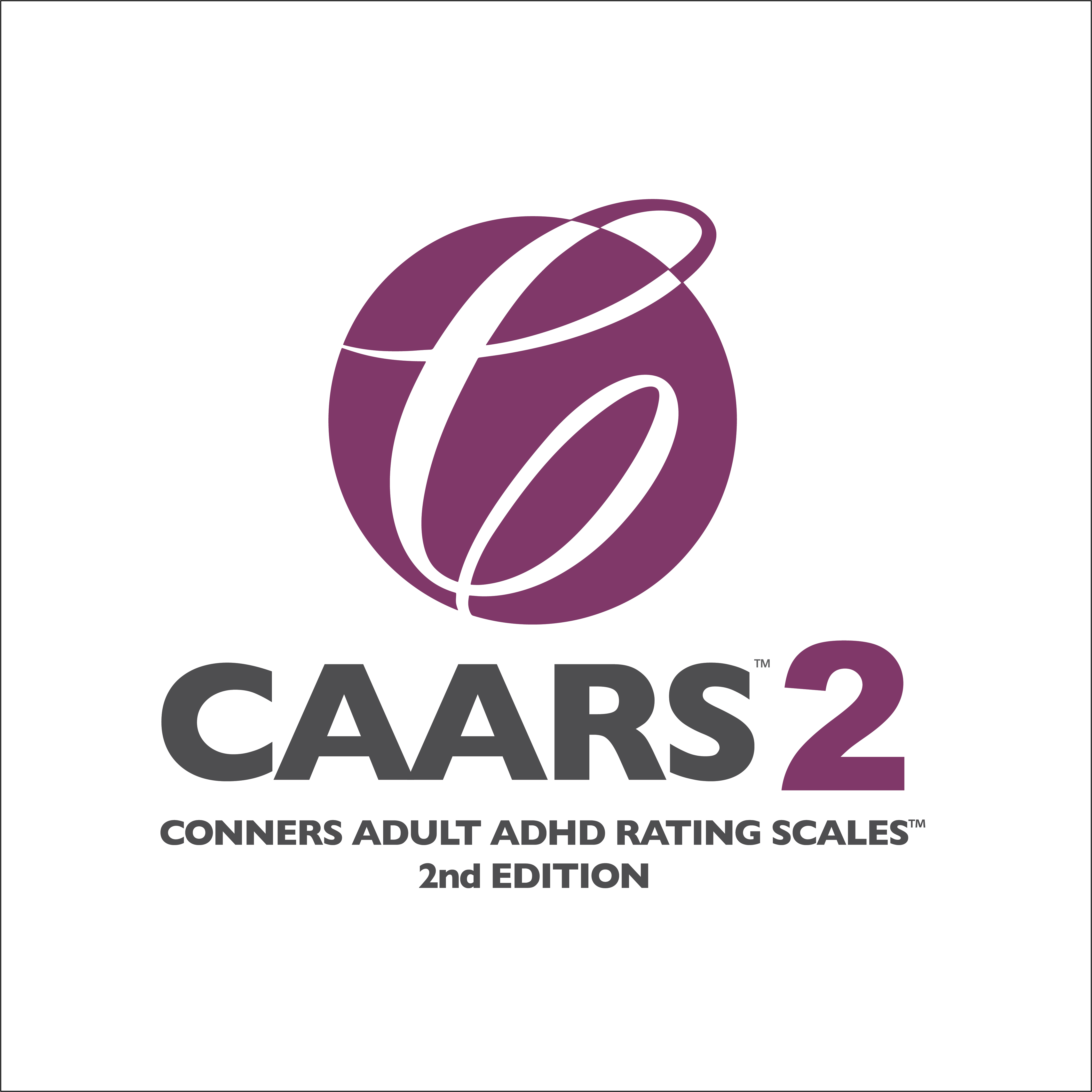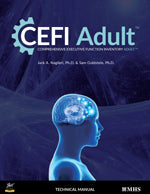
CAARS™ 2
Conners Adult ADHD Rating Scales™ 2nd Edition
Filters
Built upon the original Conners' Adult ADHD Rating Scales, the Conners Adult ADHD Rating Scales™ 2nd Edition (CAARS™ 2) is designed to surpass its predecessor, providing a more relevant and comprehensive ADHD assessment for adults. The CAARS 2 serves as a tool, in conjunction with other sources of verified information, to aid in the diagnostic process, treatment evaluation, and monitoring. This new edition provides updated, expanded, and reconceptualized scales and new scales to cover core symptoms of ADHD and its associated clinical concerns in adults 18 years and older.
Age
- 18 years and older
Rater Type
- Self-Report
- Observer
Administration Time
- CAARS 2: 10–20 minutes
- CAARS 2–Short: 5–10 minutes
- CAARS 2–ADHD Index: 1–3 minutes
Number of Items
- CAARS 2 Self Report: 97; Observer: 97
- CAARS 2–Short Self-Report: 55; Observer: 52
- CAARS 2–ADHD Index Self-Report and Observer: 12
Translations
- English
- Spanish (North America)
- French (Canada)
Qualification Level
- B
Format(s)
- Administer and score online
- Print paper forms and score online
Reading Level
- Self-Report - 4th Grade
- Observer - 6th Grade
- Updated and Expanded Norms
New normative data were derived from a large sample selected to be representative of the North American population based on the 2018 U.S. census and the 2016 Canadian census proportion (balanced equally by age and stratified by gender, race/ethnicity, education level, and geographic region). An ADHD Reference Sample has been added to allow examiners to compare scores to those produced by others already diagnosed with ADHD.
- Extended Upper Age Range
The oldest normative sample age group in the original CAARS was 50 years and older. The CAARS 2 Normative Sample includes stratified samples for seven age groups, with an upward expansion to include 50–59, 60–69, and 70+ years to ensure precision when assessing older adults.
- Gender-Inclusive Language
The CAARS 2 uses gender-inclusive language and has non-binary gender options.
- Spanish and French Versions Available
In addition to English, the CAARS 2 forms are available in Spanish (North America) and French (Canada). These versions are linguistically and culturally sensitive adaptations of the English forms.
- Multiple Reference Samples
Examiners can now select reference samples from the General Population or individuals with ADHD. Both reference samples include the option to compare against a Combined Gender group, a Gender-Specific–Males group, and a Gender-Specific–Females group. The report allows a convenient side-by-side comparison of rater scores to multiple groups.
- Increased Alignment with the Conners 4th Edition™ (Conners 4®)
The CAARS 2 and Conners 4 (a measure of symptoms of and impairments associated with ADHD, along with common co-occurring problems and disorders for youth aged 6 to 18 years) were designed to be aligned and comparable to one another to facilitate a lifespan approach to ADHD assessment/monitoring and to simplify the integration of information as adolescents transition into adulthood.
- Flexible and Simplified Purchase Options
Each CAARS 2 purchase on the MHS Online Assessment Center+ (MAC+) can be used to generate reports for any of the CAARS 2 forms (Self-Report or Observer versions of the full-length CAARS 2, CAARS 2–Short, or CAARS 2–ADHD Index). This flexibility eliminates the need to monitor remaining balances for different forms. Reports can be generated multiple times at no additional charge.
Single-Rater Report: The CAARS 2 Single-Rater Report provides detailed results from a single administration. This report includes the rater’s responses and scores for all items and scales, details on how ratings compare to ratings of other individuals of a similar age (and gender if requested), an option to compare scores to individuals with a confirmed diagnosis of ADHD and a list of which scores (if any) are elevated compared to the reference sample.
CAARS 2: The Self-Report and Observer forms include all CAARS 2 items and scales. This form is typically used when comprehensive information is sought, such as an initial evaluation or periodic re-assessment to detect any changes in core and associated features of ADHD.
CAARS 2–Short: This form is useful when a rater has limited time, or when the rater will be asked to complete the CAARS 2 multiple times (e.g., monthly assessment of treatment response, medication trials). It takes less time to complete than the full-length form but is not as comprehensive, as it has both fewer scales and fewer items per scale.
CAARS 2–ADHD Index: This index contains the 12 items from the full-length form that best differentiate individuals diagnosed with ADHD from those in the general population. This index can be used as a screener to determine which individuals are most likely to require a more comprehensive evaluation.
Reliability:
The CAARS 2 Self-Report and Observer scale scores have excellent internal consistency (median omega coefficient = .94 for Self-Report and .95 for Observer), strong test-retest reliability (median r = .92 for Self-Report and .84 for Observer), and moderate inter-rater reliability (median r = .44 to .54, depending on nature of the relationship), which is expected given the different perspectives from multiple raters. Similarly strong evidence of reliability was found for the CAARS 2–Short and CAARS 2–ADHD Index.
Validity:
Results from confirmatory factor analyses (CFA) provided evidence to support the internal structure of the CAARS 2 scales (5-factor model fit best; CFI ≥ .943, RMSEA ≤ .047, loadings > .400). Evidence for the relationship to other measures supported the convergence of constructs (median correlations with measures of ADHD and impairment ranged from .48 to .83). The CAARS 2 demonstrated a high degree of criterion-related validity as various clinical groups had distinctly different profiles of scores (e.g., very large median effect size estimates for the difference between individuals with ADHD and individuals from the general population [Cohen’s d = 2.24 for Self-Report, 1.29 for Observer]), and scores from the CAARS 2 were able to correctly classify individuals from the General Population and those from clinical samples into their respective groups (overall correct classification statistics ranged from 84.7% to 92.5% across forms).
Fairness:
There is strong evidence that the CAARS 2 meets or exceeds the fairness requirements outlined in the Standards for Educational and Psychological Testing (AERA, APA, & NCME, 2014). When investigating differences by gender, race/ethnicity, country of residence, and education levels, there was (a) sufficient evidence of equivalence of the factor models, (b) no evidence of meaningful differential test functioning between groups, and (c) negligible to small differences in average scores between groups (median Cohen’s d = 0.06 across raters and all group comparisons). The absence of statistical bias and the lack of significant group differences provide strong evidence for the fair use and interpretation of the CAARS 2 scores.
A total of 2,640 individuals were included in the Normative Samples (N = 1,320 each for Self-Report and Observer). Combined gender norms are provided for individuals in the following age groups: 18-24, 25-29, 30-39, 40-49, 50-59, 60-69, and 70+; separate norms for males and females are also available. ADHD Reference Samples are also available (N = 255 for Self-Report and N = 170 for Observer).
-
Email Address
-
Call Toll-FreeCDN1.800.268.6011US1.800.456.3003
-
International Phone+1.416.492.2627
Are you new to using MHS tools online, and want to purchase the CAARS 2?
- Purchase CAARS 2 Uses from the ‘Products’ section on this page.
- Checkout using the email address you want associated with your new MHS Assessment Center+ (MAC+) account.
- Once your purchase is complete, we’ll create your MAC+ account and deposit your online CAARS 2 uses. Please note, this process takes 1-2 business days to complete.
- When your account is created you will receive a welcome email from [email protected]. Please double-check your spam folder if you haven't received this email.
All CAARS 2 users receive access to a free, digital version of the CAARS 2 Manual through their MHS Online Assessment Center+ (MAC+) account.
